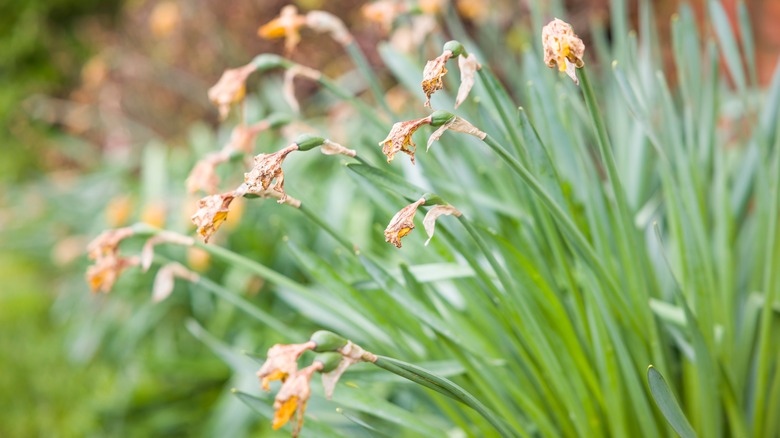Choosing what to plant in your garden is always a personal choice, but some flora rank high on everyone’s list. Daffodils are popular options for both novice and experienced gardeners because they are easy to grow, low-maintenance, and beautiful. However, there is one planting mistake that may be the reason why your daffodils aren’t blooming, and that is planting them in too much shade.
Daffodils are rugged perennials and among the first flowers to bloom in spring, and their vibrant colors really brighten up a garden that is still recovering from winter. They come in a wide range of colors and shapes with thousands of varieties, leaving you with multiple options for your garden. One thing to know before planting daffodils is that not only do they attract early-season pollinators like bees and butterflies, but deer and rodents are resistant to daffodils. They also easily spread and naturalize. These blooms are adaptable to various locations, but you have to be careful to match your variety with the amount of sun that is available in your garden.
Daffodils need a lot of sunlight

Daffodils are sun-loving plants, thriving on at least six hours of direct sunlight daily, and planting in insufficient sunlight is a common mistake when planting daffodils. These flowering plants can also tolerate full sun, and while they can technically deal with some shade, planting them there isn’t ideal. If they must be in some darkness, it’s better to have them enjoy afternoon shade after a full morning of direct sun.
Shade restricts the amount of sunlight available for photosynthesis, the process by which plants convert sunlight into energy for growth and flowering. Insufficient sunlight directly impacts flowering, so less sun impedes flower production. In the shade, you’ll likely see fewer blooms, if any at all, as the daffodil will prioritize producing green foliage over colorful flowers. Too much shade can also lead to stunted growth, with daffodils appearing weak and leggy. They may struggle to reach their full height and produce healthy leaves. They may also not bloom the following year.
Certain types of daffodils can be an exception
It’s always better to plant daffodils in locations that receive full sun throughout the day, whenever possible, to ensure they have access to the maximum amount of sunlight needed to produce their blossoms. However, if shade is unavoidable in your garden, you can choose a shade-tolerant variety. Two popular options are Jenny and Jack Snipe. Jenny daffodils are yellow, trumpet-shaped flowers with white petals, reaching a height of around one foot tall. Jack Snipe has white petals that reach about 8-10 inches tall. Both varieties are known for their extended blooming periods, lasting up to six weeks in early to mid-spring.
If you plant daffodils under deciduous trees, that can work, as these trees lose their leaves in winter. This allows sunlight to reach the daffodils during their blooming period from late winter to early spring.